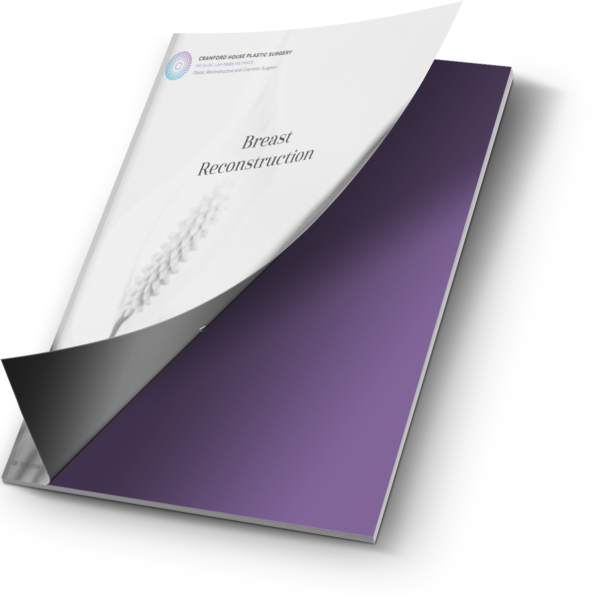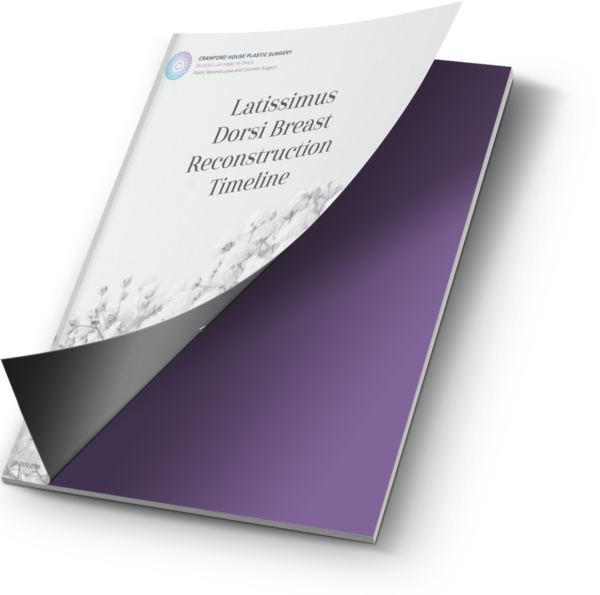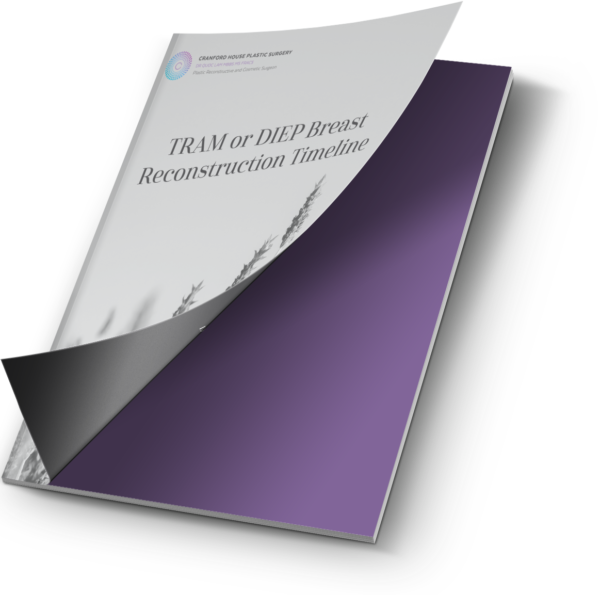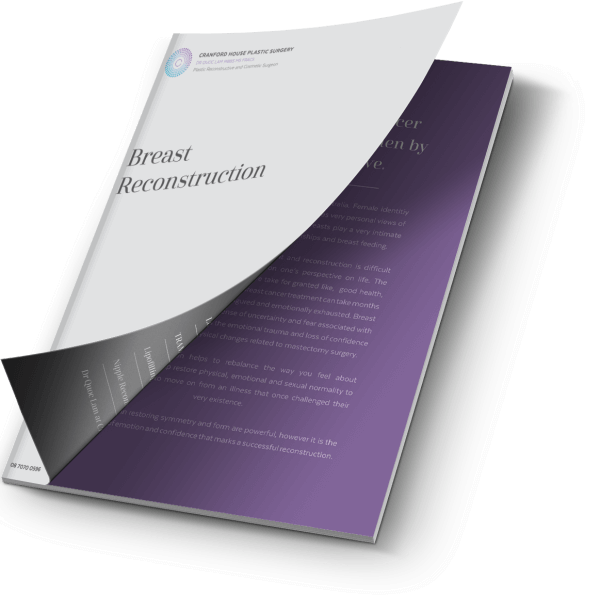Breast Reconstruction Snapshot
- Breast reconstruction adelaide can revive form /li>
- Immediate reconstruction
- Reconstruction occurs at the same time as the mastectomy
- Delayed reconstruction
- Reconstruction occurs months to years after a mastectomy
- Often follows chemotherapy and or radiotherapy
- All breast reconstructive options are complex and can be multi-staged
- There are 3 broad categories of breast reconstruction
- Expander &/or implant based reconstructions
- Autologous reconstruction using tissue from your own body to recreate a breast
- A combination of an implant and autologous tissue
Some of the options in breast reconstruction Adelaide include
- Expander & implant reconstruction
- Latissimus dorsi with or without expander reconstruction
- Abdominal flap reconstructions
- TRAM flap
- Transverse Rectus Abdominis Myocutaneous
- DIEP flap
- Deep Inferior Epigastric artery Perforator
- Lipofilling or fat grafting
- Acellular Dermal Matrices
- SPREO flap & expander
- Nipple reconstruction
- Nipple tattooing
- TRAM flap
Breast Reconstruction
In Australia, breast cancer affects one in eight women by the age of 85. It is the most common cancer in women in Australia. Breast cancer treatment can take many months to complete taking its toll on patients and their families. There is often a sense of uncertainty and fear associated with breast cancer treatment that compounds the emotional damage of disfigurement related to mastectomy surgery.
Breast cancer treatment and breast reconstruction has evolved into a complex decision-making process led by a multi-disciplinary panel of specialists. The decisions surrounding breast reconstruction must complement and not interfere with breast cancer treatment. Most importantly, these decisions are made by the patient with the guidance of the multi-disciplinary team.
One of these decisions is whether your breast reconstruction is performed during the same procedure as your mastectomy or post-poned until after you have finished chemotherapy and or radiotherapy. These are known as an immediate or delayed reconstruction respectively.
Another decision is whether you have the other breast treated as well. This can be in the form of a mastectomy and reconstruction if you pose a high risk of a new cancer in that breast. Or you may simply need a breast lift or reduction to attain better symmetry with the reconstructed breast.
It is important to understand that although there are many options when it comes to breast reconstruction, one particular type of reconstructive pathway will often suit you better than another. Every breast reconstruction is tailored to your breast cancer treatment, your body and your lifestyle.
It is important that you entrust this type of surgery to a specialist who is able to confidently perform all types of reconstruction so that there is no bias when it comes to the type of surgery that is offered.
Dr Quoc Lam is a specialist breast reconstruction surgeon who is comfortable with all the techniques available and is happy to walk you through the decision-making process. Dr Lam will clarify which options are available to you and which options are not suitable. He will discuss the various merits and limitations of these options so that you understand your situation in order to formulate a tailored plan for your breast reconstruction.
During your first consultation, there is often a lot of information to digest and it may be helpful to have your partner, friend or family member attend this first meeting with you.
If you are facing a mastectomy and want to have more information about your reconstruction, please organise a referral to see Dr Quoc Lam.
Getting through your breast reconstruction
The breast reconstruction process can be both emotionally and physically taxing, however with the right preparation and support, it can become an empowering and healing experience for you and your loved ones.
Multi-staged process
Understanding and accepting that your breast reconstruction may take several stages marks the beginning of accepting the process. For reconstructions utilising expanders and implants, there may be 3-4 stages. For breast reconstructions using flaps without an expander or implant, there may be 1- 3 stages. Each stage is spaced approximately 3-5months apart, becoming less demanding with a shorter recovery.
Although the entire process can take anywhere from 6 months to 1 year, the last 2 stages (nipple reconstruction and tattoo) are very minor and the most part of the breast reconstruction will be complete well before this time. This means that you will have completed the hardest part of your breast reconstruction in the first stage and each subsequent stage becomes easier with a shorter recovery.
The process is fairly flexible such that the stages can be organized to fit your life and your schedule.
Your life will not be put on hold for the duration of your breast reconstruction. Instead it will be punctuated by a series of procedures with relative normality in between.
Relationships and breast reconstruction
First and foremost, this surgery is for you. However, having multiple surgeries spaced over 1 year can also be difficult for those around you. It is important to think about and discuss the process with your partner or support person.
The process will have immediate effects on your partner, your children and your work relationships.
It is healthy and important that you think about these issues and formulate pre-emptive strategies to help you through your breast reconstruction. If you need further support during your breast reconstruction, make it known to your surgeon, oncologist or GP so they can understand in order to assist you.
Frequently Asked Questions
In general, breast reconstruction may be an option for women who have had a mastectomy or lumpectomy due to breast cancer or other medical conditions. The timing and type of breast reconstruction will depend on various factors, including the stage of your cancer, your overall health, your preference, and your surgeon’s recommendation.
Some factors that may make you a good candidate for breast reconstruction include:
● Good overall health
● No active infection or other medical conditions that could interfere with healing
● Realistic expectations for the outcome of the procedure
● Willingness to undergo additional surgeries if necessary
● Positive attitude and emotional stability
Ultimately, the decision to undergo breast reconstruction is a personal one that should be made in consultation with your plastic surgeon.
The settling of breast reconstruction can vary depending on factors like the extent of surgery and type of reconstruction and may take several months to a year. To aid in this process, your surgeon may suggest techniques such as massage and closely monitor your progress through follow-up appointments. Adhering to post-operative instructions and attending follow-up appointments is vital to ensuring the reconstruction settles correctly.
The ideal breast reconstruction method for you will depend on several factors, such as your health condition, cancer treatment plan, body shape, personal preferences, and the advice of your surgeon. Possible options include implant-based reconstruction, autologous tissue reconstruction, or a combination of both. It’s crucial to consult with a board-certified plastic surgeon who specialises in breast reconstruction to determine the most suitable option for you.
Download Our Information Packs

Expander Breast Reconstruction Timeline Information Pack

Latissimus Dorsi Breast Reconstruction Information Pack

Tram Breast Reconstruction Timeline Information Pack

Breast Reconstruction Guide
Further Information about Breast Reconstruction
Expander and Implants Snap Shot
- Implant based breast reconstruction is the simplest form of breast reconstruction, but it is far from simple.
- An expander is a deflated silicone prosthesis with a self-sealing port that allows incremental expansion to increase the volume of your breast reconstruction.
- Breast reconstruction can sometimes be “direct to implant”, but more commonly it requires a first stage expander, followed by a second stage procedure 3-6 months later to exchange an expander for an implant.
- If you have had radiotherapy or you are due to have radiotherapy, the use of expanders or implants carries a high risk of complications that might lead to complications and eventual loss of the implant.
Breast Reconstruction using prostheses (expanders or implants) is the most common form of breast reconstruction worldwide. There are many ways to use expanders and implants to reconstruct a breast. Practices differ around the world and depend on the surgeon, their specific training and background.
Understanding what’s right for you
Trying to understand all the techniques with their relative advantages and limitations in the context of your own body and health is very difficult without talking to a specialist in the field.
There are a few important points to understand that significantly affect decision making when it comes to considering an expander or an implant for a breast reconstruction.
Firstly, in the setting of radiotherapy, complications are more common and there is a significant risk of failure of the reconstruction that would then require the use of a different technique to reconstruct a breast.
Secondly, the greatest advantage of having an implant-based breast reconstruction is that there is no donor site morbidity. This means that you have not suffered any injury from surgery that has harvested tissue from one site of your body to create a new breast. For instance, the latissimus dorsi muscle flap requires surgery to the back region and sacrifice of the function of that muscle to create a breast, while the TRAM flap requires surgery to the abdominal region and sacrifice of the function of the rectus abdominis muscle to create a breast.
The third point to make is that even when a “direct to implant” approach is used, your breast reconstruction may still take several stages to complete. These additional stages may include a minor revision or tailoring stage as well as subsequent nipple reconstruction and tattooing. Fortunately, these later stages are much less invasive with very little downtime.
When an expander is used at a first stage, you will require visits to your surgeon to have interval expansions to increase the volume of your reconstruction, before having a second procedure to exchange the expander for an implant. Utilising an expander typically represents a more secure approach and enables superior coverage of the implant. This is crucial for the long-term durability and quality of the implant’s cover.
In the fourth place, when considering an implant-based breast reconstruction, you must consider the long term risks and limitations of implants. These are uncommon and include infection, rupture, capsular contracture, changes in aesthetics and further revisional surgeries. More recently, we have become aware of a very rare association with implants known as ALCL (anaplastic large cell lymphoma). Data is still being gathered on this rare condition, but we know that in most cases it can be easily detected, easily treated and overall is extremely rare.
Lastly, an implant expander and implants-based breast reconstruction can look and feel less natural when compared to some of the other techniques, which utilize your own tissue to make a breast. This is important when considering a unilateral or one-sided breast reconstruction. In a bilateral or two-sided breast reconstruction, the use of implants is a relative advantage, because symmetry is usually easier to achieve.
There are multiple other adjuncts and strategies that are often used in conjunction with implant-based breast reconstructions. These include the use of meshes or acellular dermal matrices, or the use of fat grafting or lipofilling.
As you can see, the discussion is complex and needs to be tailored to your particular situation and goals.
Dr Lam is a specialist breast reconstruction surgeon who is able to offer and counsel you on the best strategy for your breast reconstruction. He is relaxed and simple to understand and he will spend the time to walk you through the decision-making process.
If you would like to discuss your options, please contact Dr Quoc Lam at Cranford House Plastic Surgery.
Reliable breast reconstruction technique
This is an extremely reliable breast reconstruction technique, which is useful if your mastectomy has left you with a shortage of skin or you have had radiotherapy. In general, it results in a more natural looking and feeling reconstruction when compared to an implant-based breast reconstruction.
This type of reconstruction uses the latissimus dorsi muscle on your back. The latissimus dorsi is the largest surface area muscle in your body. It is normally used to execute a powerful rowing or chin-up motion, as well as in stabilizing the shoulder for finer control of the hand. When this muscle is used for breast reconstruction, the entirety of the muscle is used and therefore its specific function is completely sacrificed. Despite this, there are many other shoulder girdle muscles, which take over, leaving very little change to your overall function.
The latissimus dorsi muscle flap can be used in a variety of ways, however most commonly the muscle, together with some overlying skin and fat is tunnelled under the skin of the armpit to the chest in order to reconstruct your breast.
The latissimus dorsi flap can be coupled with an expander device if more volume is required. This implies a requirement for interval expansions of the expander before undergoing a second surgical procedure to exchange the expander for an implant.
The procedure takes 4 hours for a one-sided reconstruction and approximately 6-8 hours for a two-sided reconstruction.
Recovery from this type of reconstruction can be considered in parts. The first stage is the hospital stay. You will be initially recovered in a high dependency unit for careful monitoring for the first 1-2 days. The overall length of stay in hospital is usually 7 days.
The second stage of your recovery occurs at home, during which time you should be resting as if you were in hospital. During this early recovery period it is vital to have someone completely committed to your care at home. This will often require someone to take leave from work or their usual activities.
In the third stage of your recovery, dramatic improvements in general comfort and wellbeing begin from about the 3rd to 4th week. It is during this period that your care requirements at home will decrease and you will begin to explore more independence and some light activities such as short strolls in the garden.
In the last phase of recovery, you have healed and no longer require any pain relief medications. You will feel ready to explore all the things that you enjoyed before your surgery. You will slowly re-introduce normality into your life day by day.
We would recommend no driving for 3-4 weeks and no vigorous exercise for about 6- 8 weeks post-surgery.
There is a lot of information to digest when considering breast reconstruction options. It is often a good idea to have a support person with you at your first consultation. You should use this information to begin and personalize your discussion with Dr Quoc Lam.
TRAM & DIEP Flaps Snap Shot
- Advantages
- The most natural looking and feeling type of breast reconstruction available
- Added benefit of a abdominoplasty
- No requirement for an implant
- Disadvantages
- 3-5% failure rate
TRAM
- Transverse rectus abdominis muscle flap
- Sacrifices the rectus abdominis muscle on one side
DIEP
- Deep inferior epigastric artery perforator flap
- Preserves the function of the rectus abdominis muscle
- The TRAM or DIEP flap will produce the most natural looking and feeling breast when compared to other options. This is because it is composed of skin and fat just like a natural breast.
The TRAM or DIEP flap breast reconstructions utilize the skin and fat of the lower abdomen resulting in an abdominoplasty/tummy tuck. The tissue is then transferred to the chest region, where small vessels within the flap of abdominal tissue are joined to small vessels behind the ribs in the chest to re-instate blood flow to the flap. This part of the surgery requires delicate microsurgery.
This process describes a group of procedures known as free flap surgeries, where a block of tissue is disconnected from the body with its vessels and re-connected elsewhere to recipient blood vessels. This is what makes TRAM or DIEP flaps different to the other options. This type of microsurgical procedure has a small failure rate in the order of 3-5%.
The lower abdominal region often holds excess skin and fat that can be harvested with or without the underlying rectus abdominis muscle. This muscle holds the important blood vessels that keep the tissue alive. These vessels are called the deep inferior epigastric vessels.
When the muscle is included in the flap as a vehicle for these vessels, this is known as a TRAM flap. In this situation the function of the rectus abdominis on one side is sacrificed. The site where the muscle came from is repaired with prolene mesh just like a hernia repair. If only the muscle from one side is taken, there will be an initial loss of strength in sitting up that recovers completely within 3-6 months.
In some situations, the muscle does not have to be harvested with the flap. The flap is harvested to contain skin, fat and the deep inferior epigastric vessels leaving the rectus muscle behind. The anatomy of the vessels in this situation has allowed the surgeon to carefully dissect the vessels from the muscle, therefore preserving the function of the muscle. This is known as a DIEP flap. This is the ideal situation but is not always possible depending on the variable pattern of the deep inferior epigastric vessels.
If some of the muscle can be preserved, while maintaining a healthy flap, this is known as a muscle sparing TRAM flap.
If you are a candidate for one of these abdominal flaps, Dr Lam will clarify the details and explain the process and risks in more detail. You will need to have a CT angiogram to map your deep inferior epigastric vessels so that Dr Lam can explain what type of flap will be possible in you. This is usually performed between your 1st and second consultation.
This type of breast reconstruction requires 2 Plastic Surgeons and usually takes about 4-6 hours for one side or 8 hours for a 2-sided breast reconstruction.
Recovery from this type of reconstruction can be considered in parts. The first stage is the hospital stay. You will be initially recovered in a high dependency unit for careful monitoring for the first 2 days. The overall length of stay in hospital is usually 7 days.
The second stage of your recovery occurs at home, during which time you should be resting as if you were in hospital. During this early recovery period it is vital to have someone completely committed to your care at home. This will often require someone to take leave from work or their usual activities.
In the third stage of your recovery, dramatic improvements in general comfort and wellbeing begin from about the 3rd to 4th week. It is during this period that your care requirements at home will decrease and you will begin to explore more independence and some light activities such as short strolls in the garden.
In the last phase of recovery, you have healed and no longer require any pain relief medications. You will feel ready to explore all the things that you enjoyed before your surgery. You will slowly re-introduce normality into your life day by day.
We would recommend no driving for 3-4 weeks and no vigorous exercise for about 6- 8 weeks.
The TRAM or DIEP breast reconstruction is the most natural type of reconstruction that you can have. It is the most complex option available and carries a small risk of failure (3-5%). However, there is the added benefit of an abdominoplasty and you will not require an implant.
There is a lot of information to digest when considering breast reconstruction options. It is often a good idea to have a support person with you at your first consultation. You should use this information to begin and personalize your discussion with Dr Quoc Lam.
Lipofilling Snap Shot
- Lipofilling is a great technique to improve the outcomes of a breast reconstruction, but it is not a good option for reconstructing an entire breast
- Lipofilling may require more than one surgery to achieve the desired result.
Also known as fat grafting, this technique utilizes fat that is harvested by liposuction, processed by filtration and then re-injected in small droplets to fill gaps, improve contours, soften scarring and reverse the changes of radiotherapy.
It is a technique that has been used for many years all over the body. More recently, the technique has become more refined and has seen the ability to harvest larger amounts of fat for injection.
Lipofilling is still used in many areas of the body, but it is most commonly used in the setting of breast reconstruction. It is used as an adjunct to any form of breast reconstruction such as an implant-based breast reconstructions, latissimus dorsi breast reconstructions or TRAM/DIEP flap breast reconstructions.
Its strength is in its ability to improve contours and soften scars, while enhancing the volume of an existing breast reconstruction at relatively little risk and down time. There is also an increasing pool of evidence that demonstrates the remarkable benefits that fat grafting can have on radiotherapy affected tissues, improving dramatically the risk profile of an implant-based breast reconstruction in a patient who has had radiotherapy.
Although, versatile, lipofilling has some limitations. There is a variable rate of “fat take”. This means that of the fat that is re-injected, not all of it will survive. However, the fat that does survive is permanent. The rate of fat take is normally 70-90%, but this can vary between 20-90% depending on the quality of the fat harvest, the blood supply of the recipient tissue, the density and amount of scarring present and the technique of the surgeon.
This variable take implies that fat grafting may require more than one surgery to achieve the desired result.
If you would like to discuss your breast reconstruction options with Dr Quoc Lam, please call Cranford House Plastic Surgery to make an appointment.
If you would like to know more about breast reconstruction procedures we offer, or to book an appointment, please contact us today.